Advertisement
Pilgrim's Progress: The Pace Of Decommissioning Plymouth's Nuclear Plant Picks Up
Resume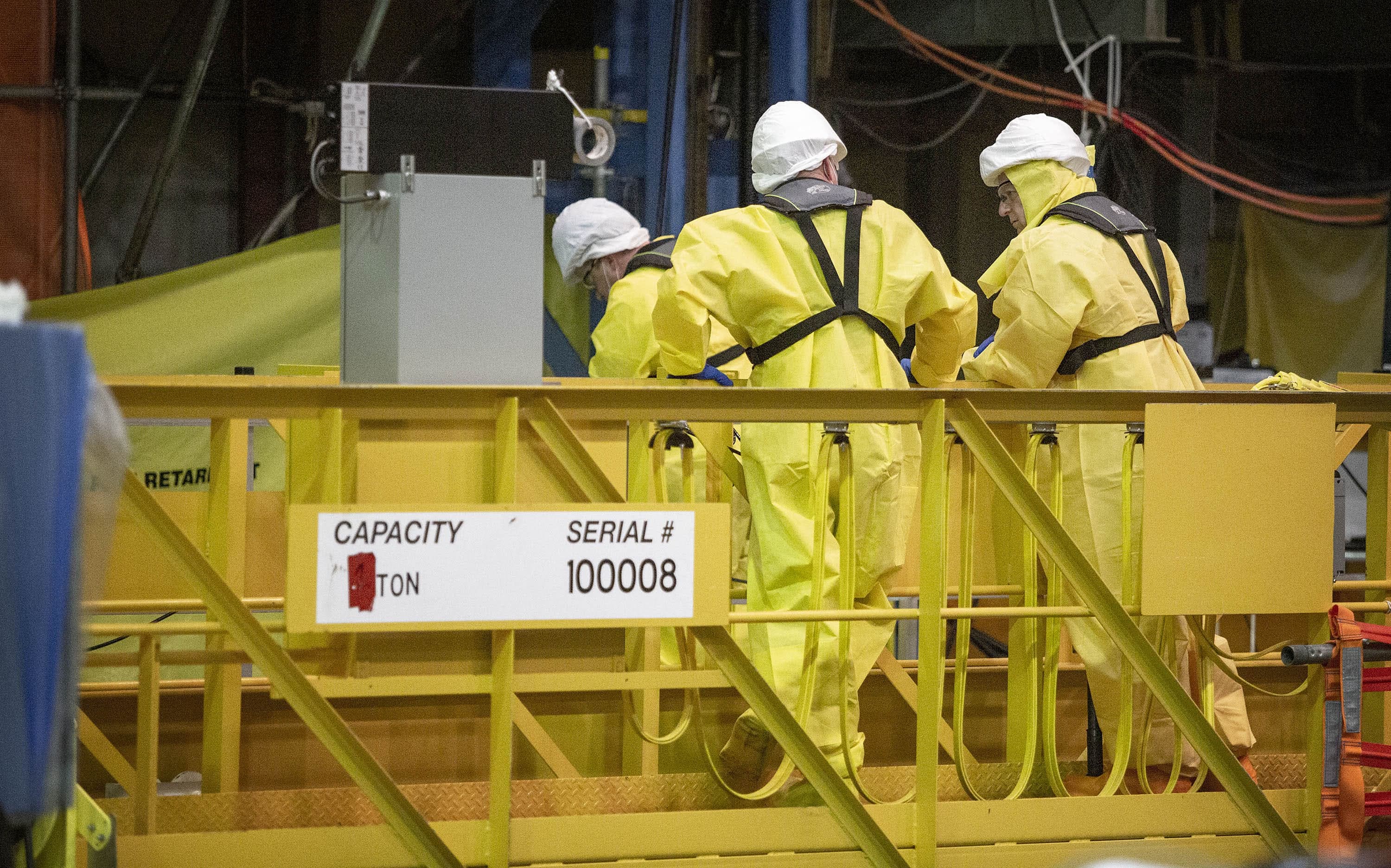
Just before Thanksgiving, the Pilgrim Nuclear Power Plant in Plymouth is expected to reach a historic milestone. All the radioactive fuel that generated electricity — and controversy — for nearly half a century will finally be removed from the reactor building. It will be stored outside in special steel and cement casks.
The rare occasion will be celebrated by both supporters and opponents of the plant. But as the decommissioning of Pilgrim proceeds, concern over the long-term safety of the highly radioactive waste continues.
Security, Security, Security
Even though Pilgrim Nuclear Power Plant stopped producing electricity two years ago, there are still armed guards in watchtowers, surveillance cameras spread over the site, mazes of barbed wire fences and concrete vehicle barriers.
Entry to the shuttered plant is highly restricted. Visitors are questioned, inspected and scanned repeatedly before being allowed to enter Pilgrim’s inner sanctum: the reactor.
David Noyes has access to all areas of the plant but still goes through the strict security measures; he swipes his magnetic badge and the doors to a security lock swoosh open.
“We’re going to go through the primary radiological check point to get into the radiologically controlled area,” he says.

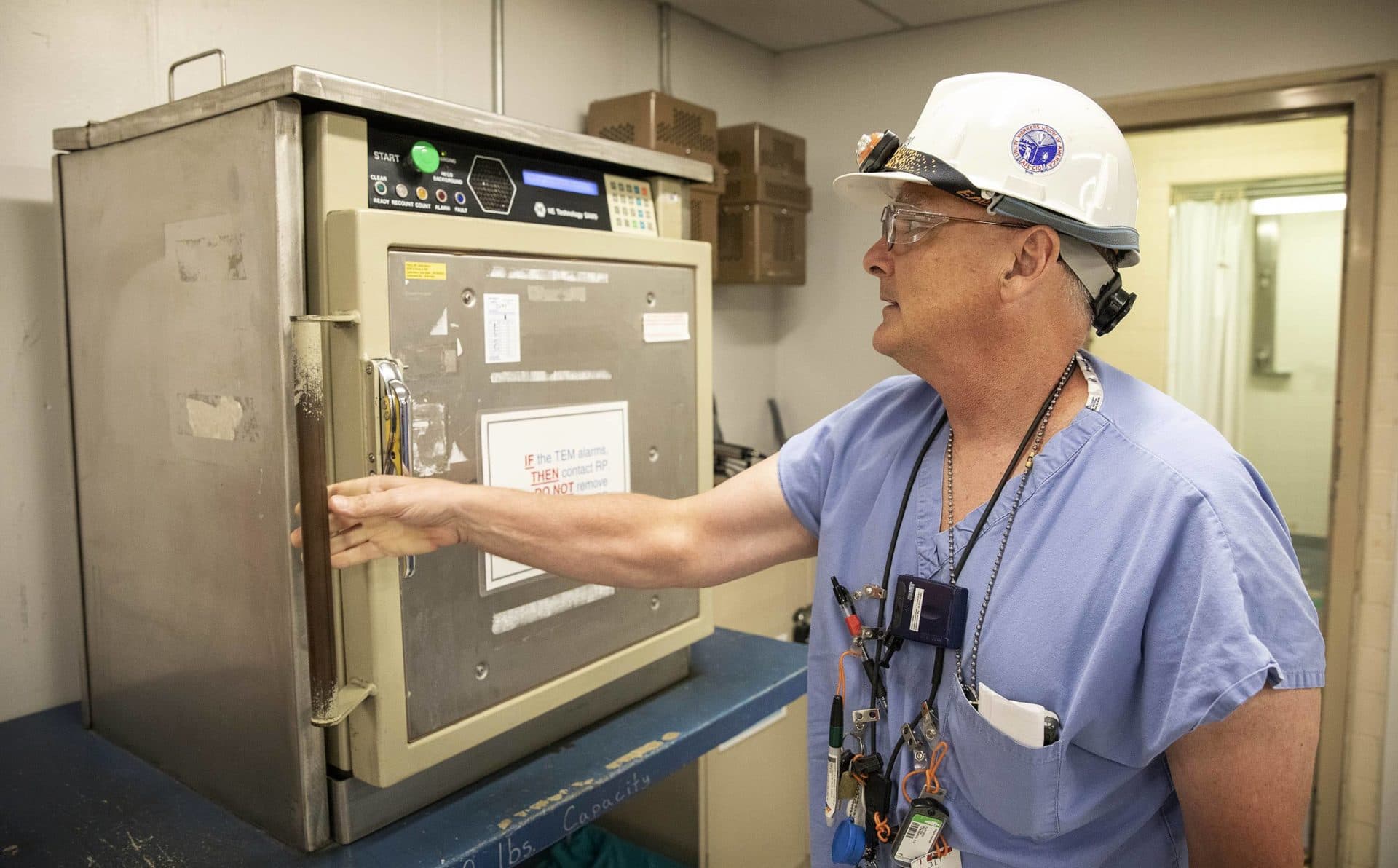
Noyes knows the Pilgrim Nuclear Power Plant inside and out. For 32 years, he worked at Pilgrim, rising from reactor operator to senior manager with Entergy, the company that owned and operated the plant until 2019 when it sold it to Holtec International.
The New Jersey-based company reportedly paid $1,000 for Pilgrim –security locks, stock and 47 years of highly-radioactive nuclear waste. In return, Holtec got access to a billion-dollar decommissioning fund, sort of like a nuclear 401k. The money was collected from utility customers and invested to pay for dismantling and decontaminating the plant when it came to the end of its productive life.
David Noyes came out of retirement to head-up the Pilgrim clean-up.
He’s now senior compliance manager with Comprehensive Decommissioning International (CDI), the company overseeing the cleanup. The company is owned by Holtec and SNC-Lavalin of Canada.
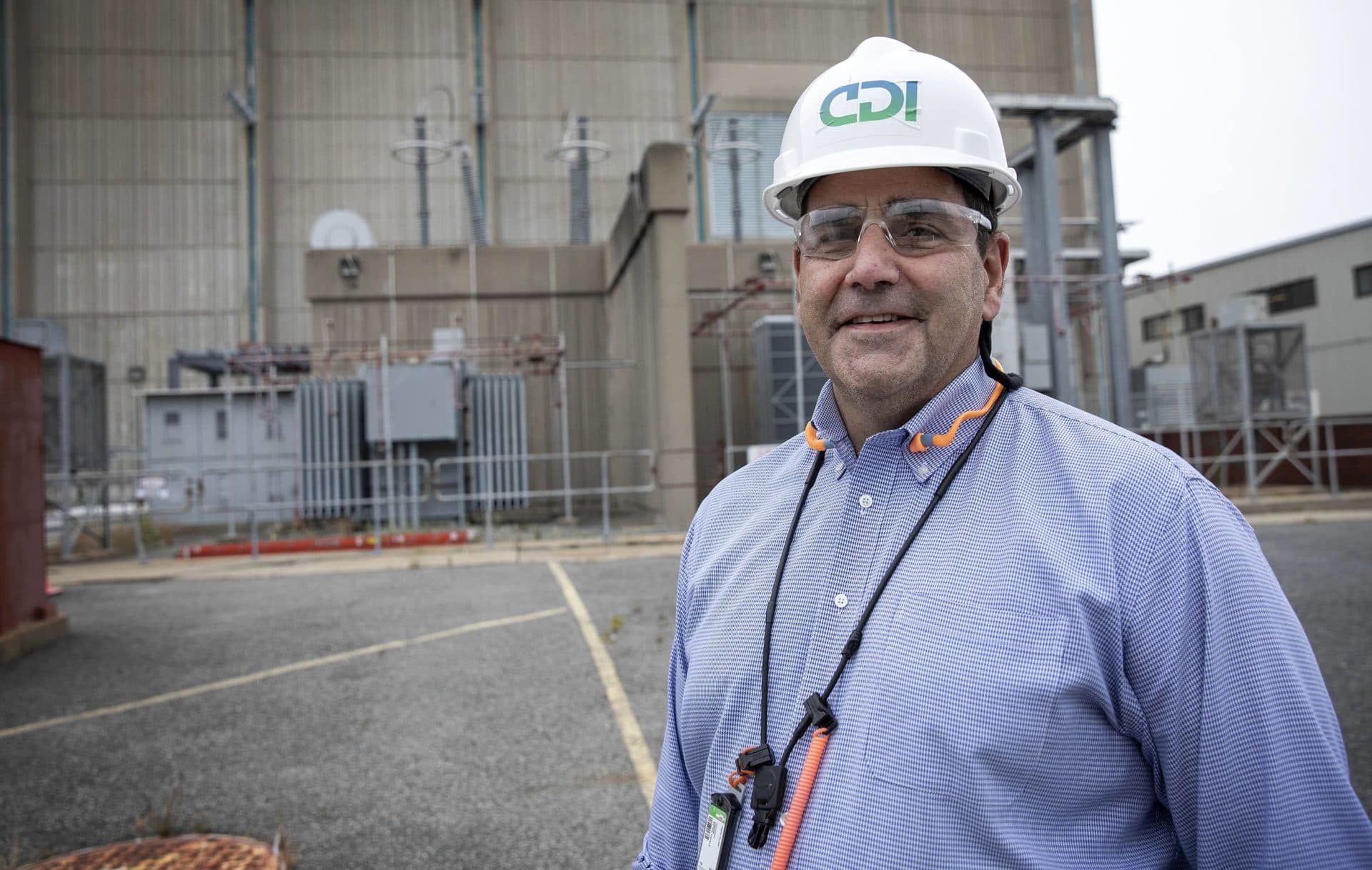
“A lot of us have stepped up to the challenge to decommission the site,” Noyes says. “We made a commitment when we were operating to see this through.”
Noyes witnessed much of Pilgrim’s troubled history. Several times ,the Nuclear Regulatory Commission (NRC) considered it the worst run reactor in the nation. The plant’s GE-Mark I reactor was the same model as those at the ill-fated Fukushima nuclear plants.
In two years, CDI workers have removed the massive concrete blocks that shielded the top of the reactor, revealing the core of the reactor vessel. It’s surprisingly small, just 21 feet in diameter and 58 feet tall, yet Pilgrim produced enough electricity to power 700,000 homes.
“The fuel was very densely packed inside of it. It’s not very large,” says Noyes, carefully guiding the way along the marked path on the floor.
Radioactive Fuel's Long And Uncertain Future
Pilgrim used uranium as its fuel. It came in pellets, each the size of a pencil eraser and weighing a third of an ounce. Each pellet generated the energy equivalent of a ton of coal, with no carbon emissions.
There were millions of pellets placed into rods, then bundled into fuel assemblies. In the reactor they became intensely hot and radioactive. Some of the radioactive waste produced decays harmlessly in days, weeks and months. But Cesium-137, like that released by the Chernobyl disaster, remains dangerous for decades and Plutonium-239 must be isolated, essentially, forever.
Holtec spokesman Pat O’Brien says all the fuel assemblies ever used at Pilgrim were stored in the 40-foot deep pool above the reactor.
"When their service life ended they went into the pool," he says. "Before they were ever irradiated — that was the last time they saw the light of day.”
Over the years, more than 4,000 spent fuel assemblies were put into the pool — five times more than it was designed to hold.
There was no place else for the irradiated spent fuel to go. The Department of Energy failed to fulfill its legal obligation to take the radioactive waste from commercial nuclear power plants. A proposed final repository, dug deep into Utah’s remote Yucca Mountain, cost billions to build but failed to meet technical or political muster. As a result of that failure and the ensuing lawsuits, the DOE has paid billions more to shuttered nuclear sites where waste is stored, including Massachusetts’ Yankee Rowe, Maine Yankee and Connecticut Yankee.
With nowhere to go, Pilgrim’s spent fuel assemblies kept piling up in the pool. Without a containment shell, a leak or broken water pump could have led to catastrophic consequences, contaminating much of New England.
CDI technicians made removing the deadly radioactive assemblies from the spent fuel pool their first priority. Much to the everyone's relief, they’re nearing the end of the process.
Workers manage the carefully-choreographed process by remote control, while watching on video screens.

“The operator on the refuel bridge has a grapple … and it goes down into the spent fuel pool and it grapples an individual fuel assembly,” says David Noyes, pointing at the video monitor. “There’s an assembly being loaded into a multi-purpose canister. That’s all happening under 16 feet of water.”
It takes about three days to load one stainless-steel canister with radioactive waste, drain and dry it, fill it with helium to prevent corrosion, weld it shut and place it into a huge concrete storage casks. The casks look like giant soup cans, about 18 feet high, 11 feet in diameter.
In all, there will be 62 casks filled with spent fuel, two with other radioactive waste and one backup. Loaded, each weighs a third of a million pounds.
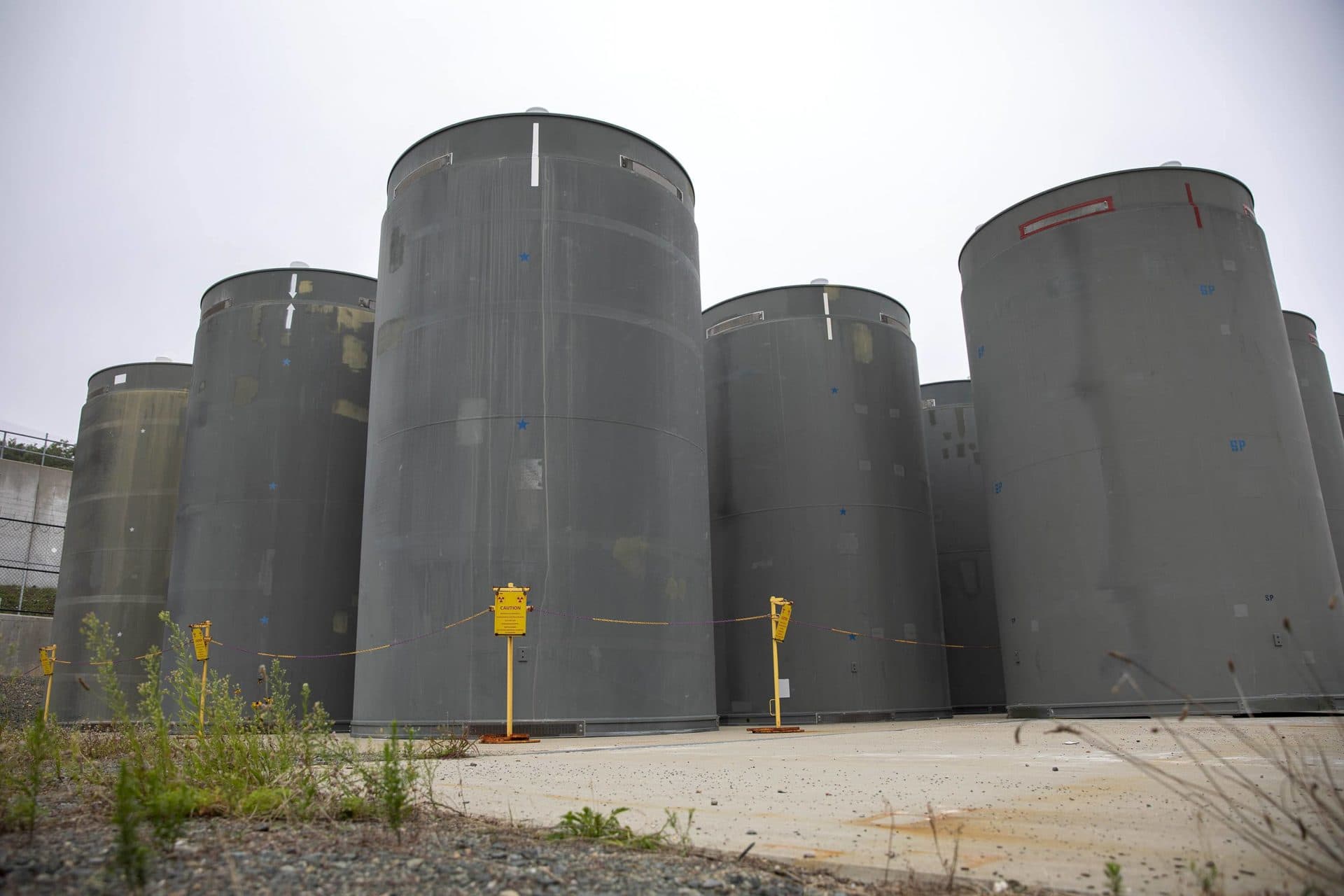
Holtec International makes the canisters and casks. The company owns five shut-down nuclear reactors at three plants, including Pilgrim, but has not yet fully decommissioned one yet. During a dry run at Pilgrim, the process hit a snag when a dummy assembly didn’t fit as intended into a multi-purpose canister.
The problem was soon solved, and workers have been loading casks filled with real spent fuel assemblies without a hitch.
But there was one major hurdle Pilgrim’s original designers had not planned for: moving the megaton casks outside. So workers had to jury-rig a rail system.
“This wasn’t considered at that time," Noyes says. “It was never the intention to have to move fuel out of the reactor building ,so all of this rail system was designed after the fact.”
The pace of the plant clean-up is picking up speed. A huge, 80-wheel flatbed transport vehicle called a "Goldhofer" crawls past the reactor building at half a mile an hour.
“You can see we have almost used up all the site that we have on this first pad,” says Noyes, pointing to a slab of concrete where 40 casks stand on end. “You can see it’s almost full.”
The remote controlled Goldhofer treks up a hill 75 feet above sea level to a new, bigger storage location. The three-foot thick concrete pad — the size of a high-school gym and officially known as an "independent spent fuel storage facility" — can hold all 65 of Pilgrim’s casks, and sits well above the expected rising seas of climate change.
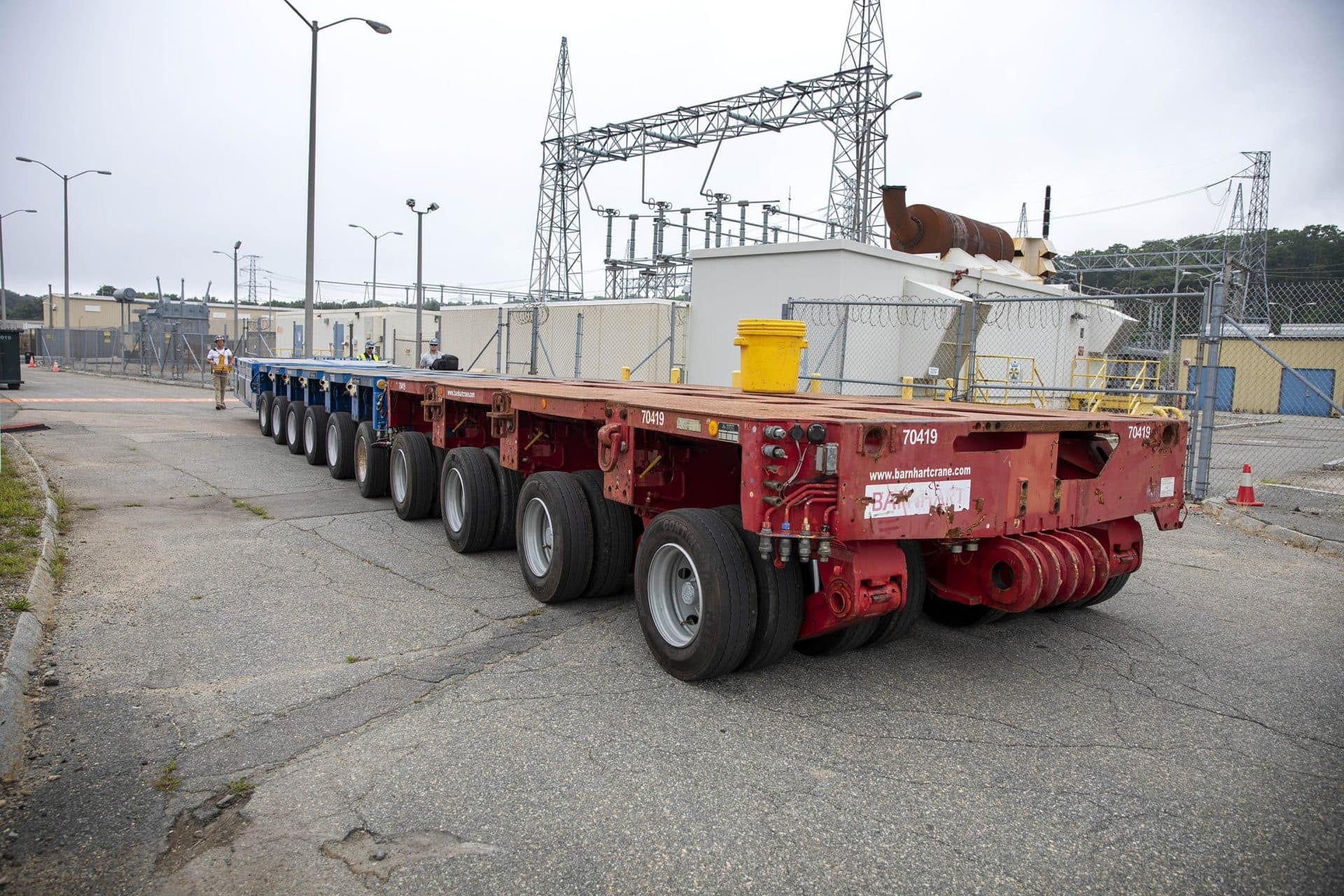
Safe storage of the nuclear waste is the name of the decommissioning game. Noyes says the goal is to consolidate all of the casks containing spent fuel assemblies into one small area.
Many buildings and machines on the Plymouth site contain asbestos and PCBs. CDI decommissioning workers will dig down at least three feet to remove chemically and radioactively contaminated soil.
Massachusetts Attorney General Maura Healy got the company to agree to clean up the site to a stricter standard than the federal government requires. She also got them to keep a quarter billion dollars from the decommissioning trust fund in reserve, just in case it runs out of money before the job is done.
Holtec owns the 1,600 acre site and has yet to say what it plans to do with it. (Eversource still owns the transformers that remain in the switch yard. The lines that carried nuclear-generated electricity to the grid could one day transmit power produced by offshore wind farms.)
It’s in Holtec's interest to finish decommissioning Pilgrim as soon as safety and the Nuclear Regulatory Commission allow. The company gets to keep whatever is left of the billion dollar trust fund.
Legally the company has until 2068, but it plans to be finished by 2026.
Preventing Radiological Sabotage
When Pilgrim was operating it employed about 600 people. Now just 160 workers are decommissioning the plant. Soon after they’re done, there will be just 60 guards securing the new storage pad, which is surrounded by barbed-wire fences, vehicle barriers and other security measures designed to detect and delay intruders.
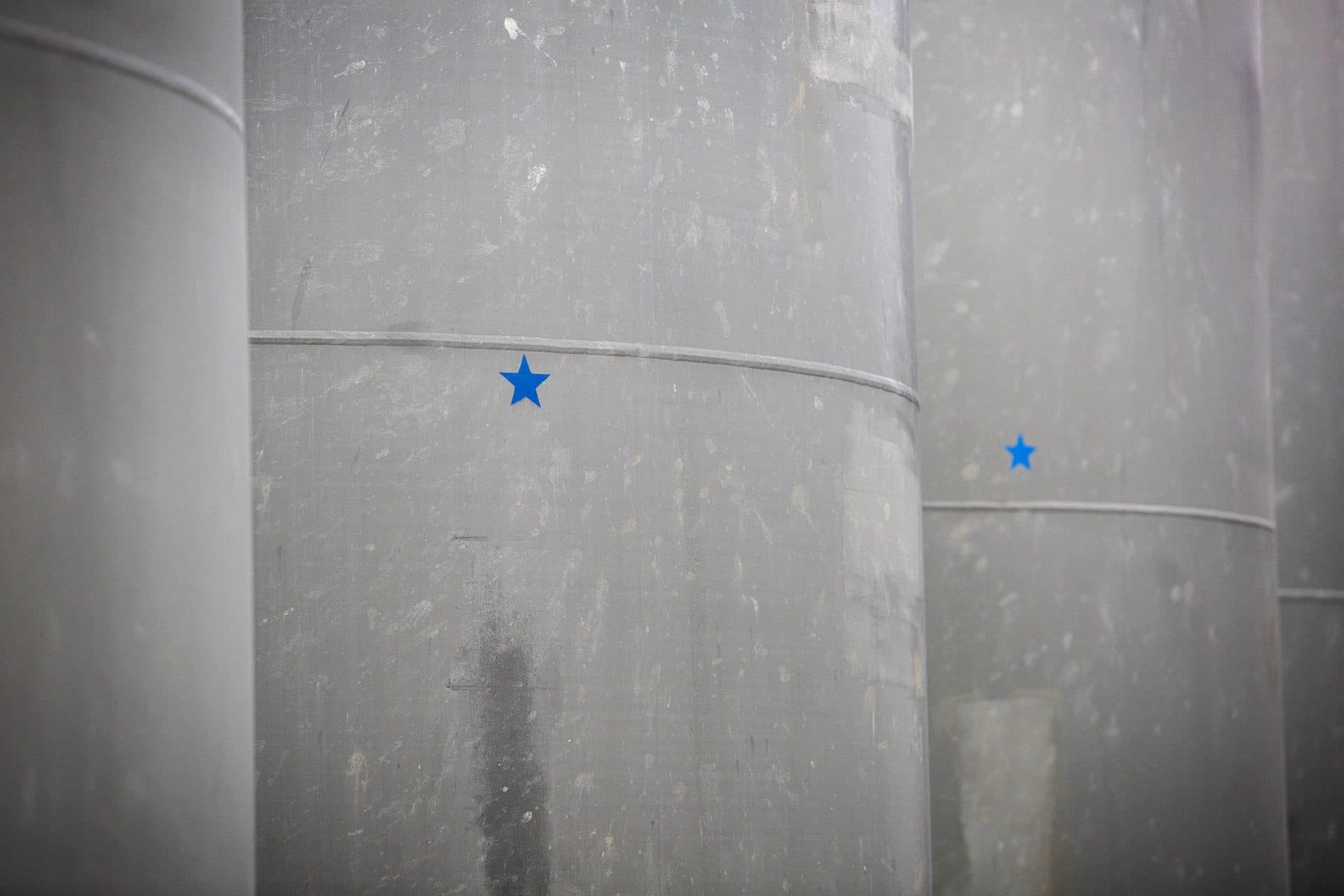
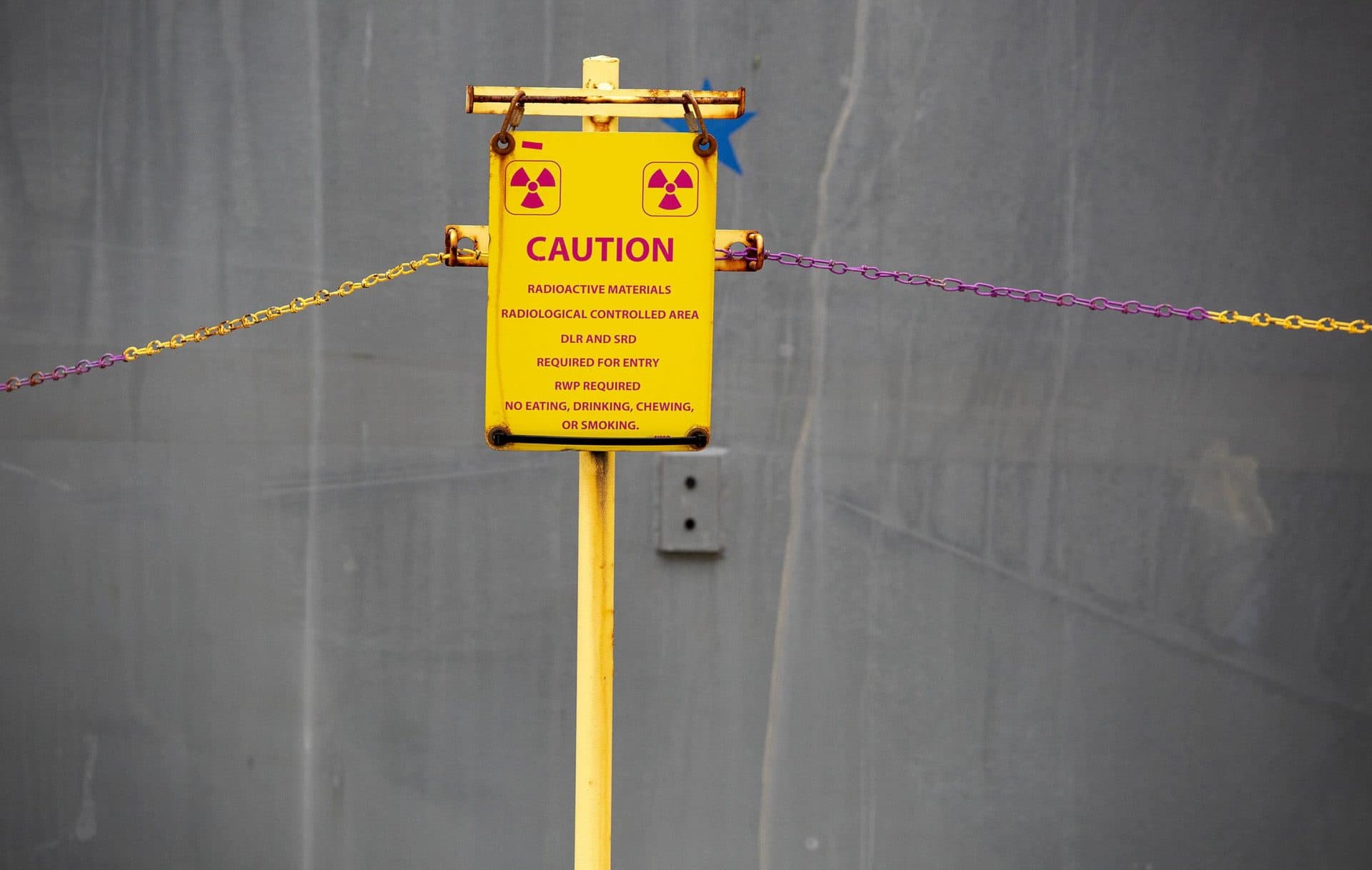
“The longer it takes for a bad guy to get to an area they can do radiological sabotage, the more efficient we can be at deploying the security force," says Noyes.
Federal law prohibits drones from flying low over nuclear facilities, but airplanes aren’t prevented from the Pilgrim flightpath. However, since 9/11 the FAA has told pilots not to loiter over nuclear sites.
“Given the speed of commercial airliners, insufficient time would be available to track and intercept suspicious aircraft,” says NRC spokesman Neil Sheehan. However, “the NRC believes protecting against terrorist attacks by air should be directed by enhanced security at airports.”
O’Brien says the company can't disclose the exact threat scenarios.
“We have simulations where we’ve flown missiles into these doesn’t breach the internal canister," he says. "We have scenarios where you would take an F-16 loaded with fuel and fly it into it and they do not breach a canister.”
O'Brien says the steel and concrete casks are guaranteed for 25 years, but can protect the radioactive waste inside for a century, if need be. But critics charge that the spent fuel storage casks aren’t secure.
Activist Diane Turco, founder and executive director of Cape Downwinders, has opposed Pilgrim for nearly four decades. She says the storage pad is in plain sight, near a public road.
“If I can eyeball those casks, someone with malicious intent could do some serious damage," she says.
Turco says she’s repeatedly gone on the Pilgrim property and gotten near the storage pad areas undetected.
“I was there more than half an hour and nobody ever came out,” she says.
At a recent meeting of the Nuclear Decommissioning Citizens Advisory Panel (NDCAP), which the state established to advise the governor on activities related to Pilgrim, board member Mary Lampert said she had received an email from a Pilgrim whistleblower about security concerns. The email claimed that there are not enough security workers on site, and that Holtec has not completed the training they have claimed they have done.
WBUR's repeated attempted to contact the whistleblower were unsuccessful.
The Massachusetts Attorney General's office says they are reviewing the whisleblower’s claims. Holtec says the charges aren’t true.
The company hopes to eventually ship Pilgrim’s storage casks to New Mexico, if federal regulators approve its plan to build an interim storage facility where it can consolidate thousands of casks being stored at 76 old nuclear reactors around the country. Earlier this week the NRC issued a license to a competitor to build and operate a facility in West Texas.
Until another storage facility is approved, Pilgrim’s toxic legacy will remain in Plymouth, sealed in giant casks on a storage pad above Cape Cod Bay.
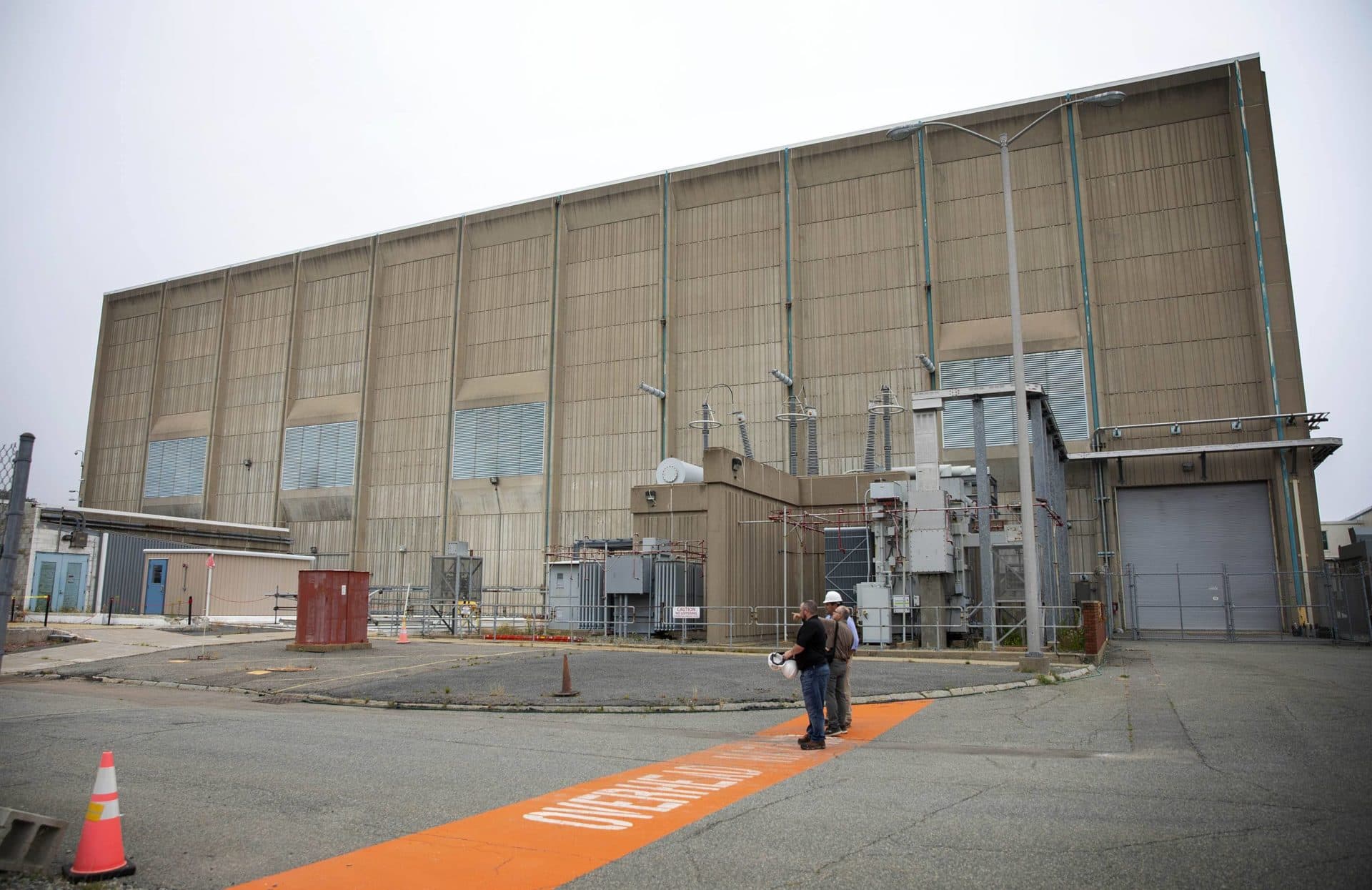
Correction: the original version of this story said that Diane Turco was a member of the Nuclear Decommissioning Citizens Advisory Panel (NDCAP). She is not. WBUR regrets the error.
This article was originally published on September 16, 2021.
This segment aired on September 16, 2021.
